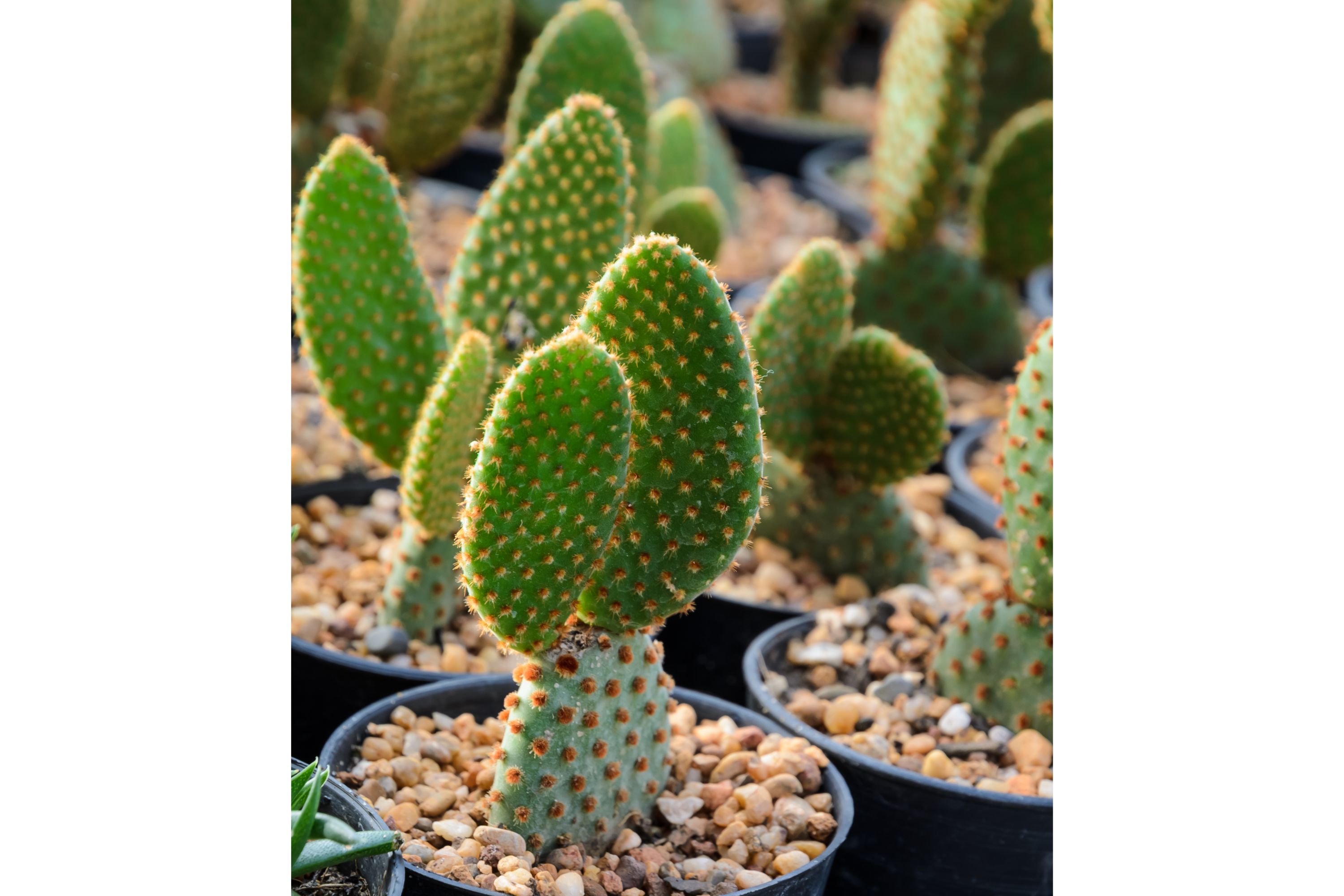Bunny ears cactus
(Opuntia microdasys)

Description
Opuntia microdasys is a species of cactus that is commonly known as the bunny ears cactus or the polka dot cactus. This plant is native to Mexico and is popularly cultivated as an ornamental plant due to its striking appearance and low-maintenance requirements. In this article, we will provide a detailed overview of Opuntia microdasys, including its physical characteristics, habitat, growing requirements, propagation methods, and potential health benefits. Physical Characteristics Opuntia microdasys is a small to medium-sized cactus that typically grows to a height of about 60-90 cm (2-3 feet) and a spread of 60-90 cm (2-3 feet). The plant has a distinctive appearance, characterized by flattened, oval-shaped pads that are covered in small, fuzzy dots that resemble bunny ears. The dots are actually clusters of tiny spines called glochids, which are modified hairs that protect the plant from herbivores. The pads of Opuntia microdasys are typically bright green in color and can range in size from 4-12 cm (1.5-4.7 inches) in length and 3-10 cm (1.2-4 inches) in width. The plant produces bright yellow or orange flowers that are about 5 cm (2 inches) in diameter and bloom in the summer. Habitat Opuntia microdasys is native to central and northern Mexico, where it grows in rocky, dry areas and deserts. The plant is well adapted to hot, arid conditions and is able to tolerate temperatures up to 45°C (113°F). It is also able to withstand extended periods of drought and is often found growing in areas with poor soil quality. Growing Requirements Opuntia microdasys is a relatively easy plant to care for and is suitable for both indoor and outdoor cultivation. The plant requires bright, direct sunlight for at least 6 hours per day to thrive, and should be watered sparingly, only when the soil is completely dry. Overwatering can cause the plant to rot and die, so it is important to avoid keeping the soil consistently moist. Opuntia microdasys is able to grow in a wide range of soil types, but prefers well-draining soil that is slightly acidic with a pH between 6.0 and 7.0. The plant is also able to tolerate a wide range of temperatures, but prefers temperatures between 20-30°C (68-86°F) during the day and 10-20°C (50-68°F) at night. Propagation Methods Opuntia microdasys can be propagated from both stem cuttings and seeds. Stem cuttings should be taken from healthy, mature plants during the spring or summer months. The cuttings should be allowed to dry out for a few days before being planted in well-draining soil. It is important to avoid watering the cuttings until they have developed roots, as excess moisture can cause them to rot. Seeds can be harvested from mature plants and should be planted in well-draining soil during the spring or summer months. The soil should be kept moist until the seeds germinate, which typically takes about 1-2 weeks. Potential Health Benefits Opuntia microdasys has been traditionally used in Mexican folk medicine to treat a variety of ailments, including diarrhea, stomach pain, and wounds. The plant is believed to have anti-inflammatory and antimicrobial properties, which may contribute to its medicinal benefits. Recent studies have also suggested that Opuntia microdasys may have potential health benefits for individuals with type 2 diabetes. One study found that consuming Opuntia microdasys extract helped to improve insulin sensitivity and reduce blood glucose levels in individuals
Taxonomic tree:







